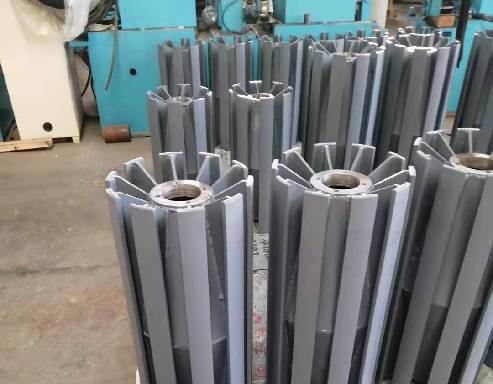 Afrikaans
Afrikaans  Albanian
Albanian  Amharic
Amharic  Arabic
Arabic  Armenian
Armenian  Azerbaijani
Azerbaijani  Basque
Basque  Belarusian
Belarusian  Bengali
Bengali  Bosnian
Bosnian  Bulgarian
Bulgarian  Catalan
Catalan  Cebuano
Cebuano  Corsican
Corsican  Croatian
Croatian  Czech
Czech  Danish
Danish  Dutch
Dutch  English
English  Esperanto
Esperanto  Estonian
Estonian  Finnish
Finnish  French
French  Frisian
Frisian  Galician
Galician  Georgian
Georgian  German
German  Greek
Greek  Gujarati
Gujarati  Haitian Creole
Haitian Creole  hausa
hausa  hawaiian
hawaiian  Hebrew
Hebrew  Hindi
Hindi  Miao
Miao  Hungarian
Hungarian  Icelandic
Icelandic  igbo
igbo  Indonesian
Indonesian  irish
irish  Italian
Italian  Japanese
Japanese  Javanese
Javanese  Kannada
Kannada  kazakh
kazakh  Khmer
Khmer  Rwandese
Rwandese  Korean
Korean  Kurdish
Kurdish  Kyrgyz
Kyrgyz  Lao
Lao  Latin
Latin  Latvian
Latvian  Lithuanian
Lithuanian  Luxembourgish
Luxembourgish  Macedonian
Macedonian  Malgashi
Malgashi  Malay
Malay  Malayalam
Malayalam  Maltese
Maltese  Maori
Maori  Marathi
Marathi  Mongolian
Mongolian  Myanmar
Myanmar  Nepali
Nepali  Norwegian
Norwegian  Norwegian
Norwegian  Occitan
Occitan  Pashto
Pashto  Persian
Persian  Polish
Polish  Portuguese
Portuguese  Punjabi
Punjabi  Romanian
Romanian  Russian
Russian  Samoan
Samoan  Scottish Gaelic
Scottish Gaelic  Serbian
Serbian  Sesotho
Sesotho  Shona
Shona  Sindhi
Sindhi  Sinhala
Sinhala  Slovak
Slovak  Slovenian
Slovenian  Somali
Somali  Spanish
Spanish  Sundanese
Sundanese  Swahili
Swahili  Swedish
Swedish  Tagalog
Tagalog  Tajik
Tajik  Tamil
Tamil  Tatar
Tatar  Telugu
Telugu  Thai
Thai  Turkish
Turkish  Turkmen
Turkmen  Ukrainian
Ukrainian  Urdu
Urdu  Uighur
Uighur  Uzbek
Uzbek  Vietnamese
Vietnamese  Welsh
Welsh  Bantu
Bantu  Yiddish
Yiddish  Yoruba
Yoruba  Zulu
Zulu conveyor idler roller design
Conveyor Idler Roller Design Key Considerations for Optimal Performance
Conveyor systems are integral to various industries, facilitating the efficient movement of materials. At the heart of these systems lies the conveyor idler roller, a critical component that ensures the smooth transport of goods. The design of idler rollers is crucial, affecting both the system’s performance and longevity. This article delves into the key considerations in conveyor idler roller design.
Understanding Idler Rollers
Idler rollers are cylindrical components that support the conveyor belt, ensuring it remains on track while reducing friction. They play a vital role in the overall efficiency of the conveyor system, impacting load support, belt alignment, and energy consumption. To achieve optimal performance, several factors must be taken into account during the design process.
Material Selection
The choice of materials for idler rollers is fundamental. Common materials include steel, aluminum, and various polymers. Steel is favored for its strength and durability, making it suitable for heavy-duty applications. On the other hand, aluminum offers a lightweight alternative that can be advantageous in lighter applications. Moreover, certain polymers provide corrosion resistance, ideal for environments exposed to harsh chemicals or weather conditions.
Roller Diameter and Width
The diameter and width of the idler roller significantly affect its performance. Larger diameter rollers can reduce the bending stress on the conveyor belt, thereby enhancing lifespan and reducing maintenance costs. However, they also require more space, which may not always be feasible. Width, meanwhile, must be designed to adequately support the load being transported, ensuring there is no excessive sagging of the belt.
conveyor idler roller design

Bearing Design
The bearings within idler rollers are critical to their performance. High-quality bearings minimize friction, allowing for efficient rotation and reducing energy loss within the system. The design should also consider bearing placement, which can influence the roller's longevity and performance. Incorporating sealed or shielded bearings can further enhance durability by preventing the ingress of dirt and moisture.
Loading Capacity and Distribution
Designing for the correct loading capacity is essential to prevent premature wear or failure. Idler rollers must be capable of withstanding dynamic loads generated during operation. This involves careful calculations and considerations of load distribution across multiple rollers to ensure even support and minimize stress on the conveyor belt.
Surface Finish and Coating
The surface finish of idler rollers should not be overlooked. A smooth surface can reduce friction between the roller and the conveyor belt, enhancing efficiency. Additionally, applying protective coatings can prevent corrosion and improve the roller's lifespan, particularly in harsh operating environments.
Conclusion
In conclusion, effective conveyor idler roller design involves multifaceted considerations that directly impact the efficiency and longevity of conveyor systems. Material selection, roller dimensions, bearing quality, load capacities, and surface finish are all critical aspects that engineers must carefully evaluate. By prioritizing these elements, industries can significantly enhance operational efficiency, reduce downtime, and ensure reliable material handling processes. Effective design and maintenance of conveyor idler rollers thus translate into substantial economic benefits for businesses across various sectors.
-
Revolutionizing Conveyor Reliability with Advanced Rubber Lagging PulleysNewsJul.22,2025
-
Powering Precision and Durability with Expert Manufacturers of Conveyor ComponentsNewsJul.22,2025
-
Optimizing Conveyor Systems with Advanced Conveyor AccessoriesNewsJul.22,2025
-
Maximize Conveyor Efficiency with Quality Conveyor Idler PulleysNewsJul.22,2025
-
Future-Proof Your Conveyor System with High-Performance Polyurethane RollerNewsJul.22,2025
-
Driving Efficiency Forward with Quality Idlers and RollersNewsJul.22,2025





























